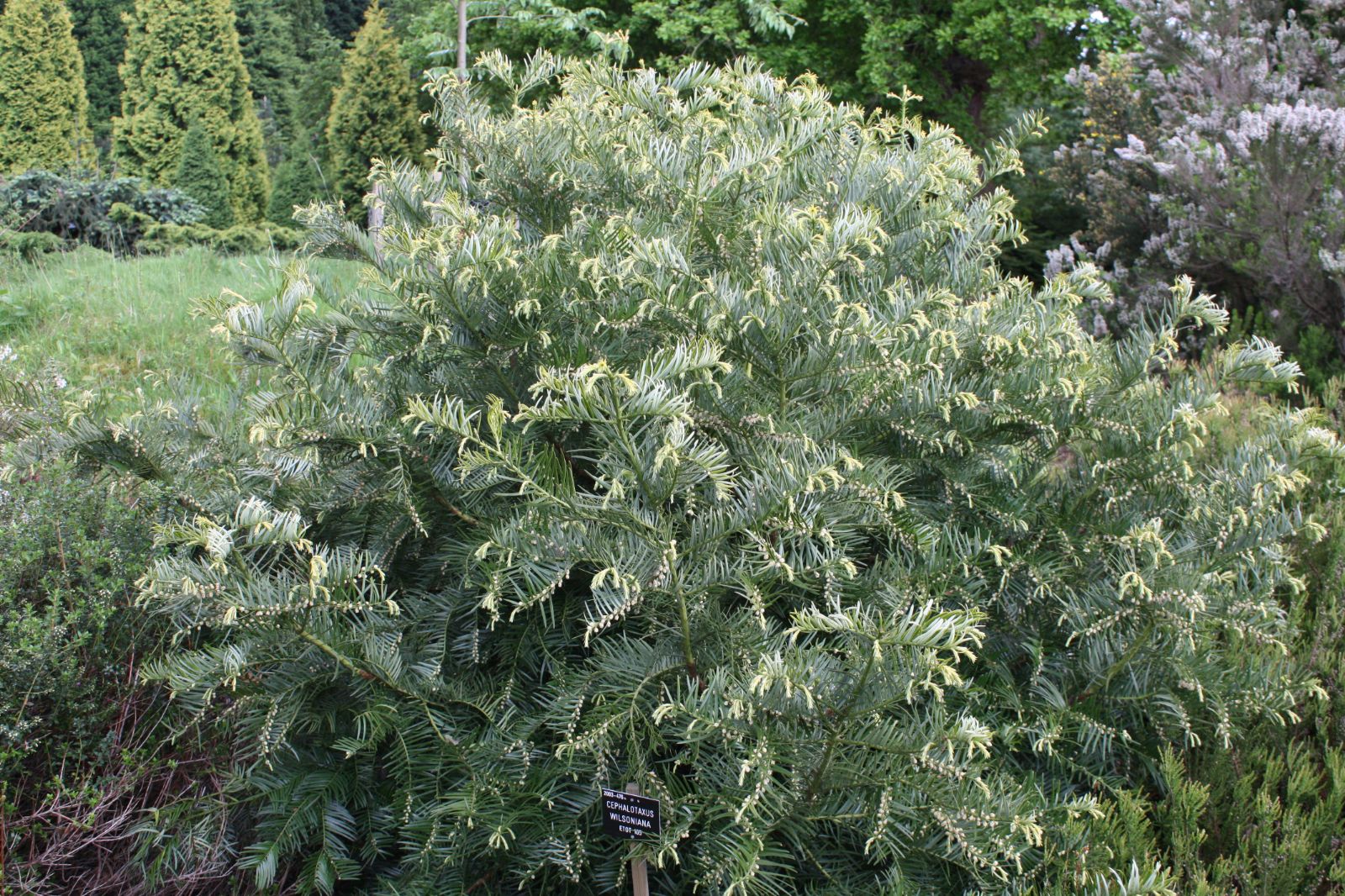Cephalotaxus wilsoniana
Credits
Article from New Trees by John Grimshaw & Ross Bayton
Recommended citation
'Cephalotaxus wilsoniana' from the website Trees and Shrubs Online (treesandshrubsonline.
Genus
Common Names
- Taiwan Plum Yew
The taxonomic status of C. wilsoniana is contentious; it has been linked with C. harringtonii (Fu et al. 1999a) and with C. fortunei (Rushforth 1987), and Li & Fu (1997) and Fu et al. (1999a) recognised it only as a variety of C. sinensis. Cephalotaxus wilsoniana has leaves that are somewhat falcate or twisted, taper from well below the apex, and are about 10 times as long as wide (5–10 times as long as wide in C. sinensis: Fu et al. 1999a). In contrast, leaves of C. sinensis are almost entirely parallelsided and taper only near the apex. The leaves of C. wilsoniana are arranged in two ranks, but are often oriented in different directions, with no clear V-shaped channel between the ranks. The Taiwan Plum Yew forms a small tree to 10 m, 0.4 m dbh. New shoots bright green, turning dark reddish green after three or four years. Li & Keng 1994b, Fu et al. 1999a. Distribution TAIWAN. Habitat Mixed or coniferous forests in valley bottoms, between 1400 and 2000 m asl. USDA Hardiness Zone 8. Conservation status Endangered. Illustration Li & Keng 1994b, Fu et al. 1999a; NT237. Cross-reference K69.
The most distinctive identification character for this plant is that it comes from Taiwan, which is not very helpful for plants of unknown provenance. There are specimens grown from the 1992 Kirkham and Flanagan collection ETOT 105 at Kew, Wakehurst Place and Howick, and it was also collected by the Edinburgh Expedition to Taiwan (ETE) at several sites in 1993. Quarryhill grows plants from a 2001 expedition. Kirkham and Flanagan’s official field notes record that it grows in mixed forest with Sorbus, Pinus and Quercus, on a slightly shaded slope. In the more lively account of their travels in book form (Flanagan & Kirkham 2005), they reveal that the seeds had to be extracted ‘somewhat gingerly’ from monkey droppings. The resulting ETOT 105 plants are growing slowly, being approximately 1 m tall after 14 years (the wild trees were 3 m, according to the field notes). They have dark mid-green leaves, in contrast with the yellowish, sun-stressed specimens at Quarryhill.
Potted plants of both C. wilsoniana and C. sinensis were fruiting at Cistus Nursery in July 2004. The fruits of C. wilsoniana were approximately 18 × 7.5 mm, compared with 24 × 15 mm for C. sinensis, but this apparent size difference may not be consistent.



